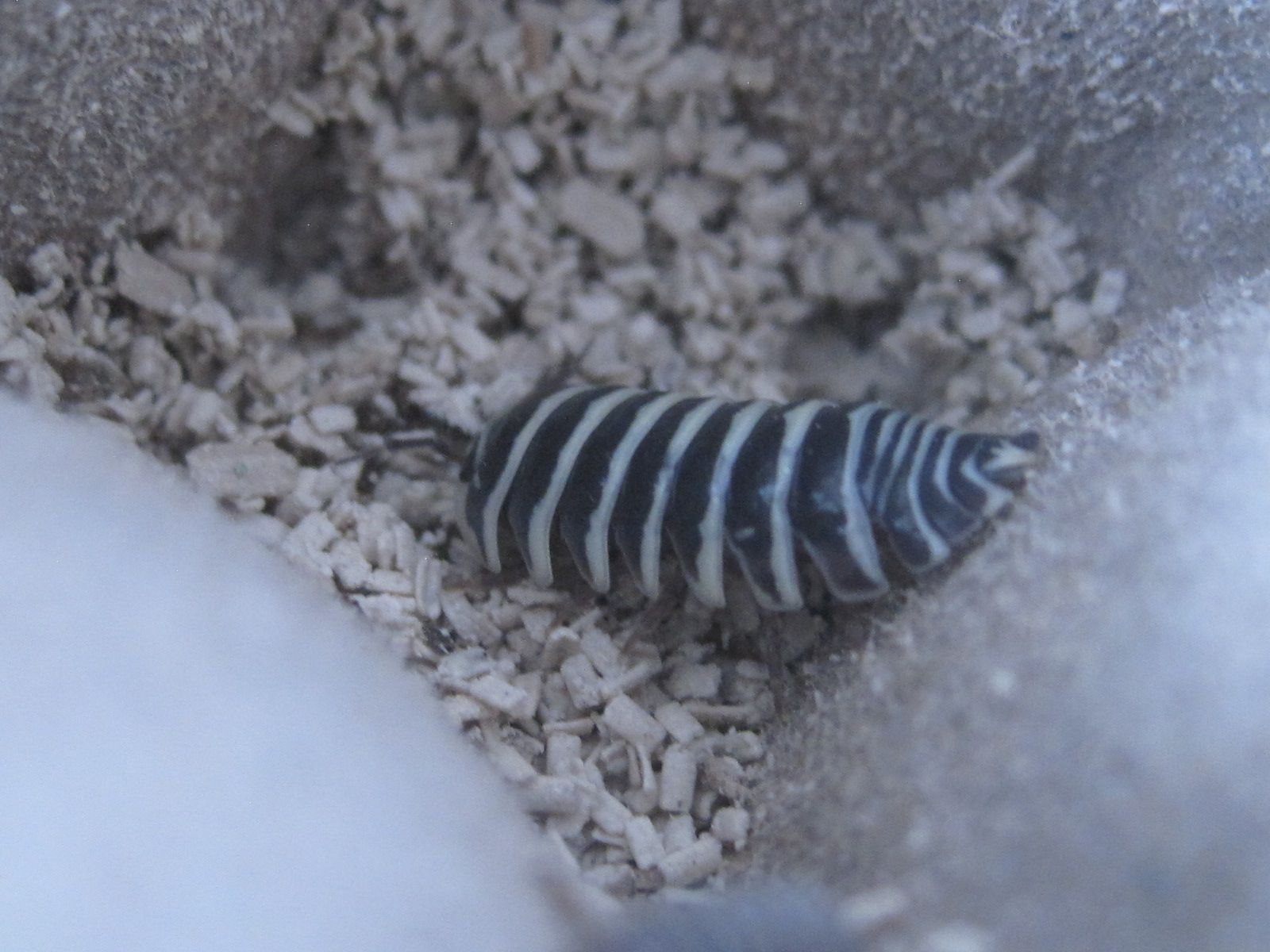Since getting into creating bioactive enclosures for my reptiles, I’ve taken a hard turn into isopods (terrestrial crustaceans). Even though I sometimes refer to them as “my bugs,” they are not bugs, or even insects. These little critters are closer relatives to shrimp (that I also keep as a hobbyist), crabs, and lobsters.
Some cool things about them:
- Have gill-like structures (that can resemble paddle-shaped lungs) attached to specialized limbs; these are near their butts
- Require moisture, so are often found in damp places
- Often nocturnal and feed mostly on dead plant matter (detritivores)
- Have an exoskeleton and jointed limbs
- Often have 11 body segments and seven pairs of legs
- In females, some of these limbs (oostegite) create a marsupium (pouch) for eggs (or young)
- Hatchlings are called mancae and are cared for by their mother in some species
- Moult in two stages: the back half, and then a few days later, the front half
Armadillidium
Clown Isopod
I really like the colours of these isopods. Out of all the ones I’m keeping though, they are the pickiest of eaters. They don’t seem to go after the cellulose and spirulina algae as much as the others. I’m working on feeding them a wider variety of foods and decaying matter. Because of how picky they are about what they eat, I’m not certain if I’ll use them in my larger enclosures.
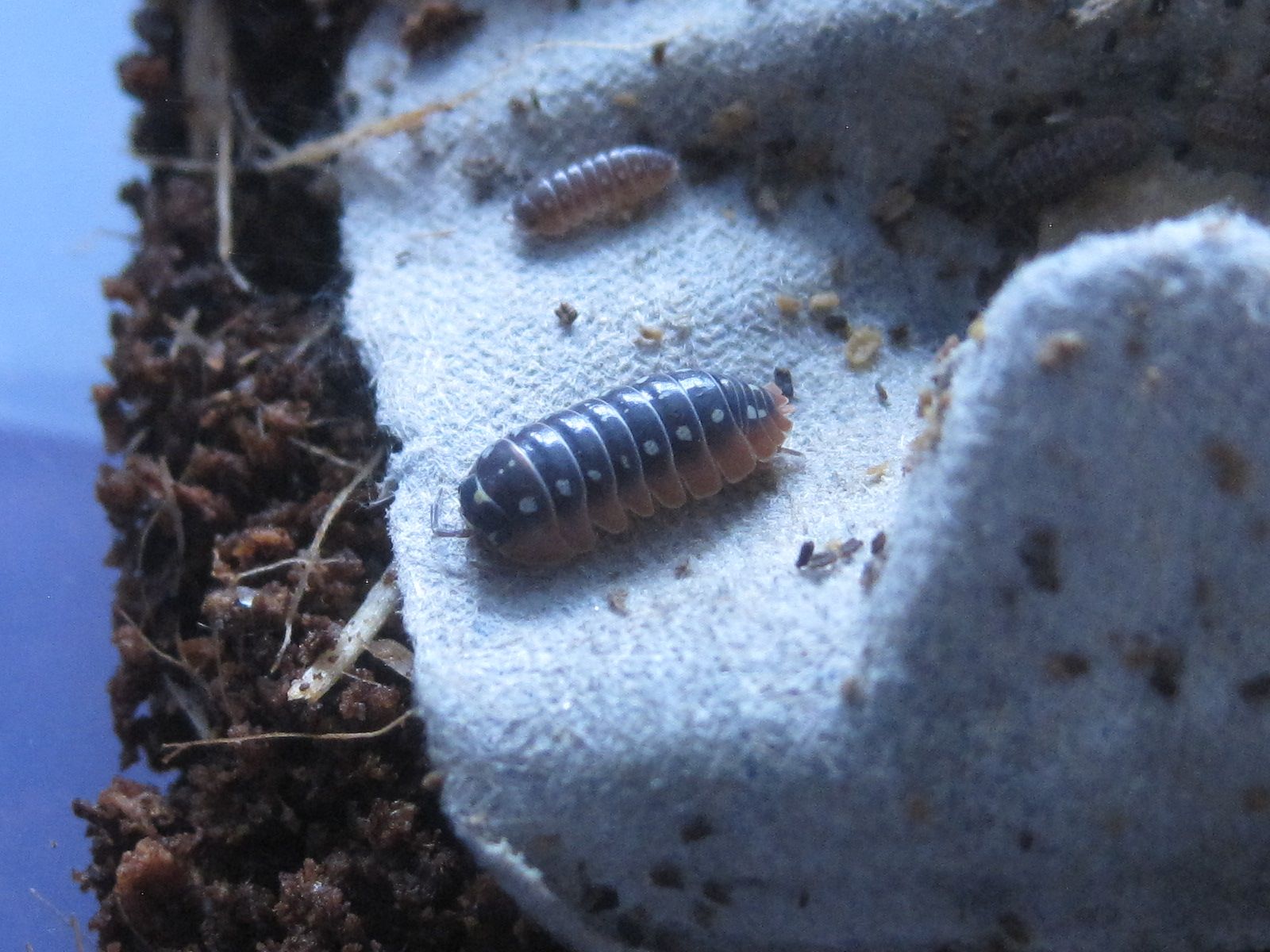
Armadillidium klugii (clown isopod)
Zebra Isopod
These were my first isopods, and possibly my favourites. They nom on calcium like it’s going out of style and like to wander everywhere in search of food.
Unfortunately my first colony of zebra isopods almost entirely expired due to predation. I kept them in my crested gecko’s enclosure and they flourished for approximately eight months. He refused to eat live insects, so I thought things were cool. I regularly weigh my gecko and noticed that he had suddenly gained some heft to him.
After literal months of simply licking the isopods and not bothering them, he finally figured out that they were edible… and devoured almost the entire colony.
The survivors are safe and thriving now.
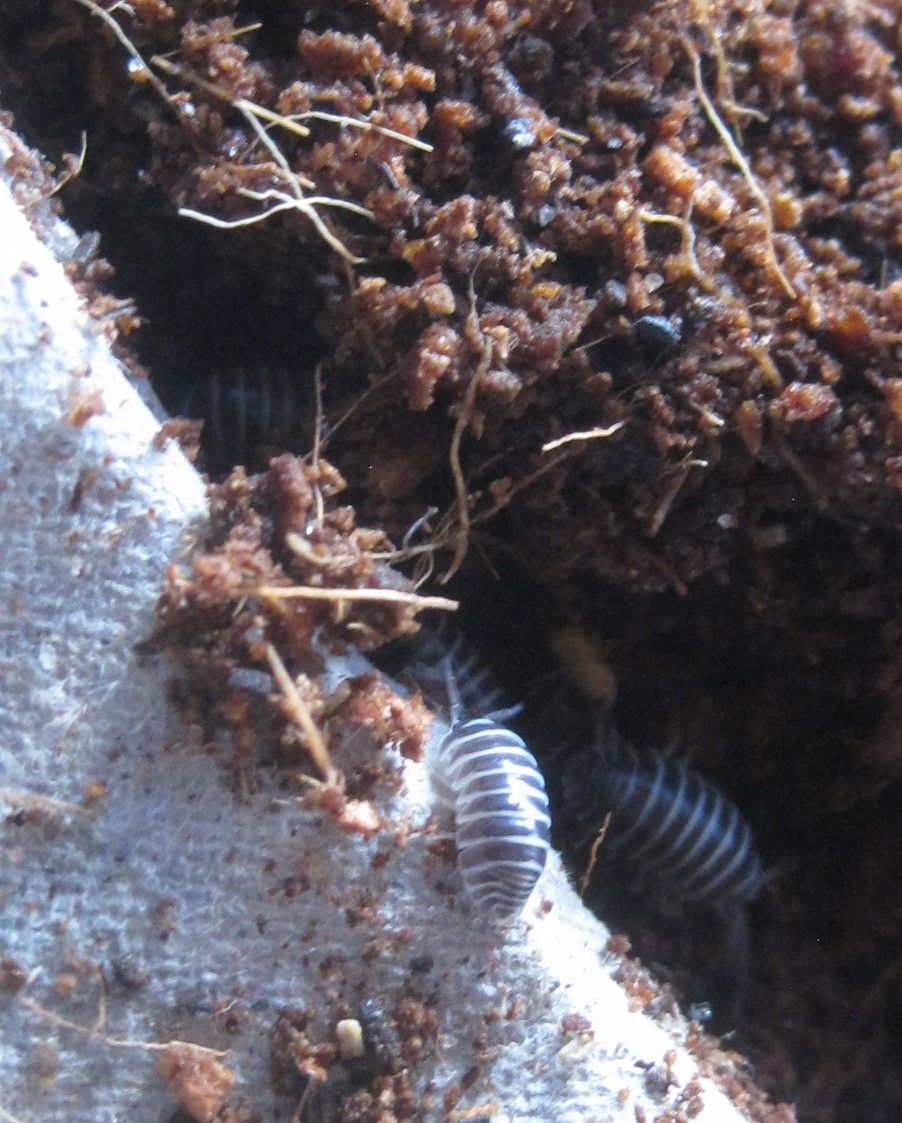
Armadillidium maculatum (zebra isopod)
Porcellio
Dairy Cow Isopod
These are my largest isopods and will so far eat just about anything. They also really like to burrow. They’ve dug many escape tunnels and trap doors in their enclosure. They’re called dairy cow isopods because, well, look at those spots. I really like the colour variation that they have and how large they get.
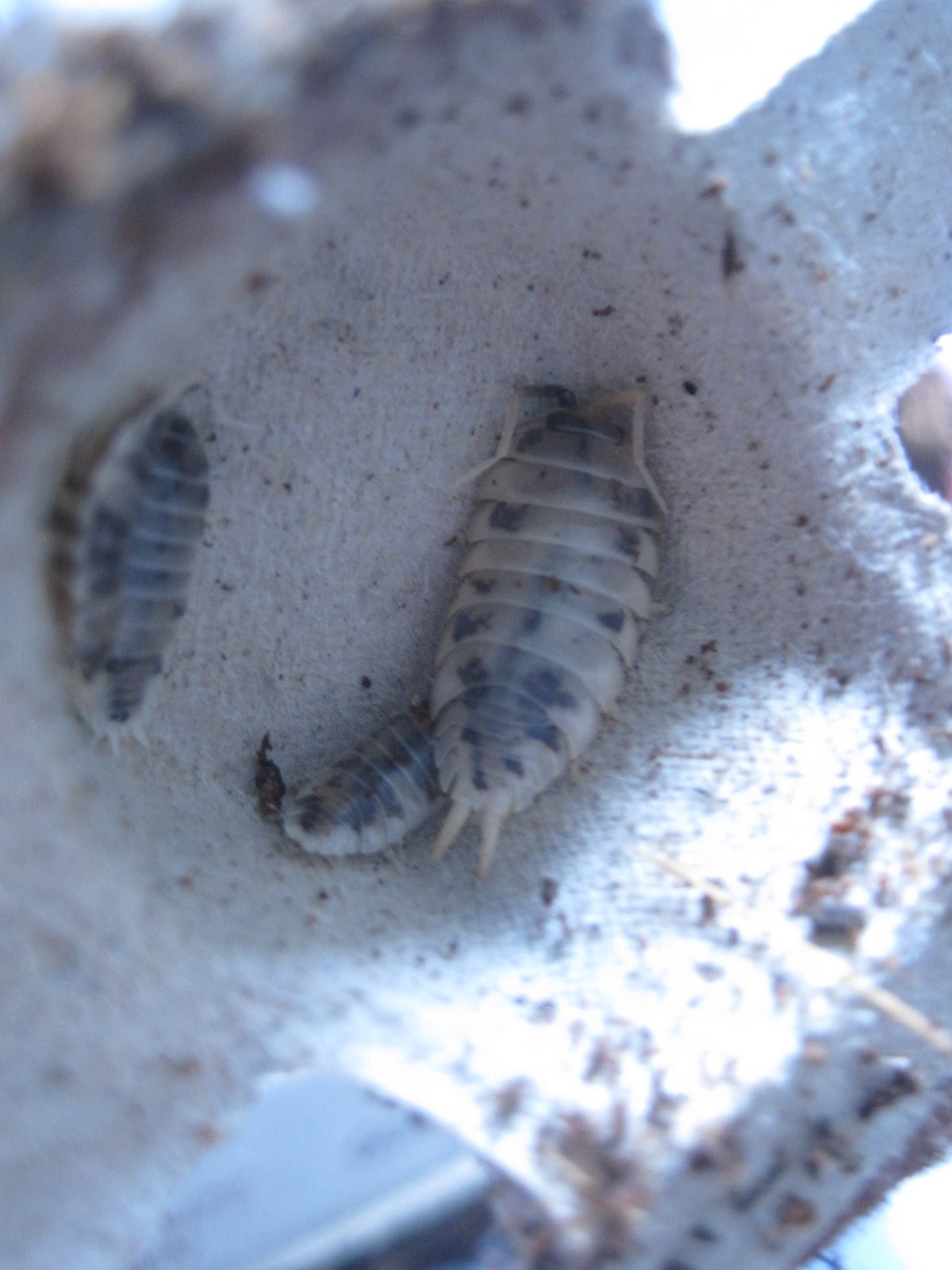
Porcellio laevis (dairy cow isopod)
Porcellionides
Powder Orange Isopod
The powder orange isopods are both my most prolific and voracious. They are also the most active, climbing over, under, and through things. Because of their activity, they remind me the most of having my own personal “flea circus.”
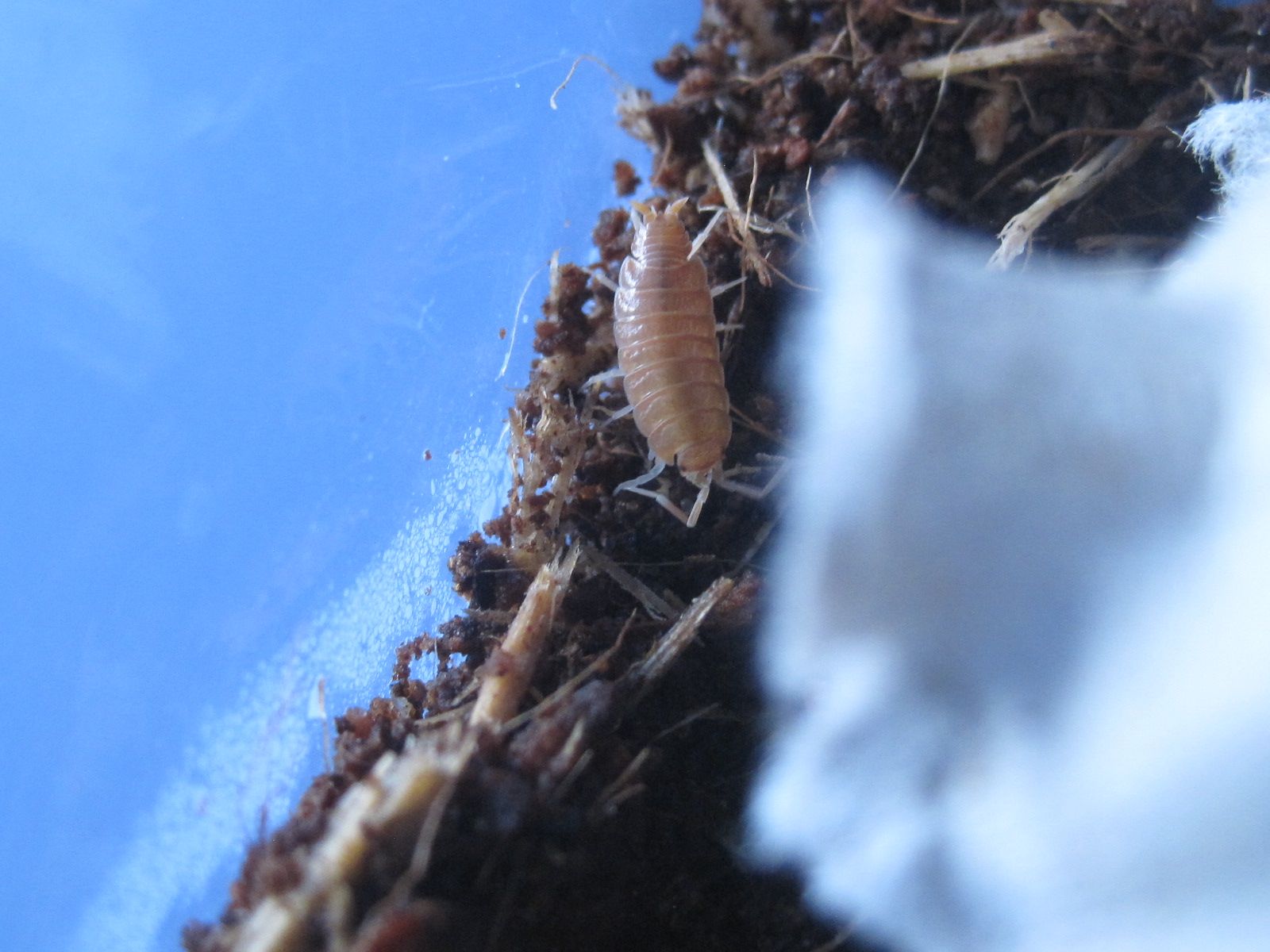
Porcellionides pruinosus (powder orange isopod)
Trichorhina tomentosa
Dwarf White Isopod
My dwarf white isopods are the smallest of the crew. They’re around 2-4 mm and tricky to photograph. A bunch of them are doing well in my snake’s bioactive enclosure. They mostly like hanging out underneath the water dish where it is the dampest. Some of them may have a future as food for mourning geckos…
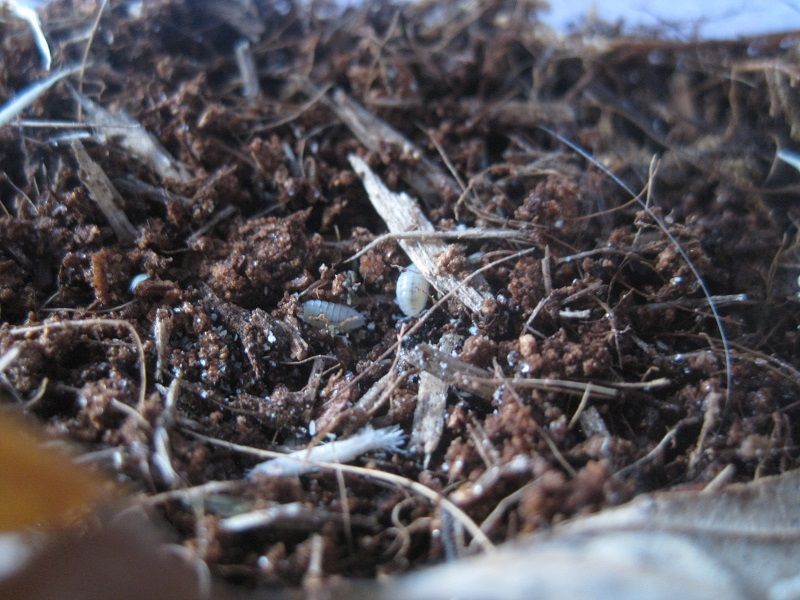
Trichorhina tomentosa (dwarf white isopod)
It’s been pretty chill caring for all of these isopods. They’re relatively low maintenance: I check them between once and twice a week, mostly to drop additional food in, monitor population, and ensure that they have good air flow.
My colonies are getting nicely established and I’m looking forward to adding them as inhabitants to some more bioactive enclosures in spring 2020.
If you’re in Canada, I may also have some isopods up for sale or trade. Everyone ought to have pet crawlies. 🍁🥰
